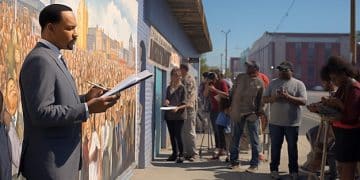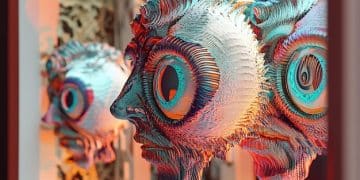Creative Placemaking: Art’s Role in Revitalizing Spaces
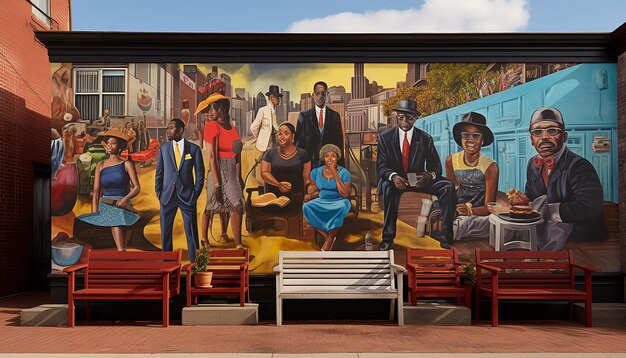
Creative placemaking strategically leverages arts and culture to shape the physical and social character of a neighborhood, town, city, or region, fostering community engagement and economic development in underused spaces.
Creative placemaking is transforming how we view and interact with our environments. By integrating art and culture into urban and rural planning, we can breathe new life into underused spaces, creating vibrant community hubs and boosting local economies.
Understanding Creative Placemaking
Creative placemaking is more than just adding art to a space; it’s a holistic approach that seeks to transform and revitalize communities. It involves artists, community members, local organizations, and other stakeholders working together to shape the physical and social character of a place.
This collaborative process aims to enhance public spaces, promote social interaction, and stimulate economic growth. Ultimately, it’s about creating places that are not only visually appealing but also foster a sense of belonging and identity.
Key Principles of Creative Placemaking
Several core principles guide the practice of creative placemaking, ensuring that projects are community-driven and sustainable. These principles emphasize collaboration, inclusivity, and authenticity.
- Community Engagement: Projects should actively involve local residents in the planning and implementation process.
- Authenticity: Placemaking initiatives should reflect the unique history, culture, and identity of the community.
- Collaboration: Successful projects require strong partnerships between artists, local organizations, and government agencies.
These principles of creative placemaking projects help them to focus on giving value and appreciation to the communities involved.
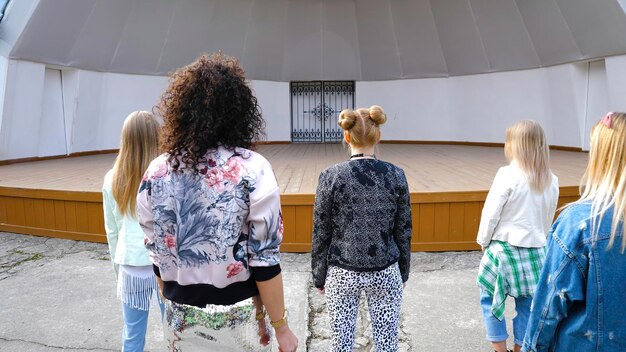
The Impact of Art on Revitalization
Art plays a pivotal role in the revitalization of underused spaces. It can transform neglected areas into vibrant destinations, attracting residents, tourists, and businesses alike. However, the best form of art is one that considers the surrounding community.
By incorporating public art, installations, and performances, creative placemaking projects can create a sense of excitement and energy, fostering a positive perception of the area. Art serves as a catalyst for change, sparking new possibilities and opportunities.
Economic Benefits of Art
Art and culture are not only aesthetically pleasing but also economically beneficial. Creative placemaking initiatives can stimulate local economies by attracting visitors, increasing property values, and supporting local businesses.
Studies have shown that communities with thriving arts and culture scenes tend to have stronger economies and higher quality of life. Art acts as an economic driver, creating jobs and generating revenue.
In conclusion, when done right, art offers economic benefits to the communities that host it.
Examples of Successful Creative Placemaking Projects
Numerous creative placemaking projects across the United States have demonstrated the transformative power of art and culture. These examples showcase the diverse ways in which art can revitalize underused spaces and create thriving communities. We will analyse different projects here.
From urban parks to vacant storefronts, these projects have turned neglected areas into vibrant destinations, attracting residents, tourists, and businesses alike.
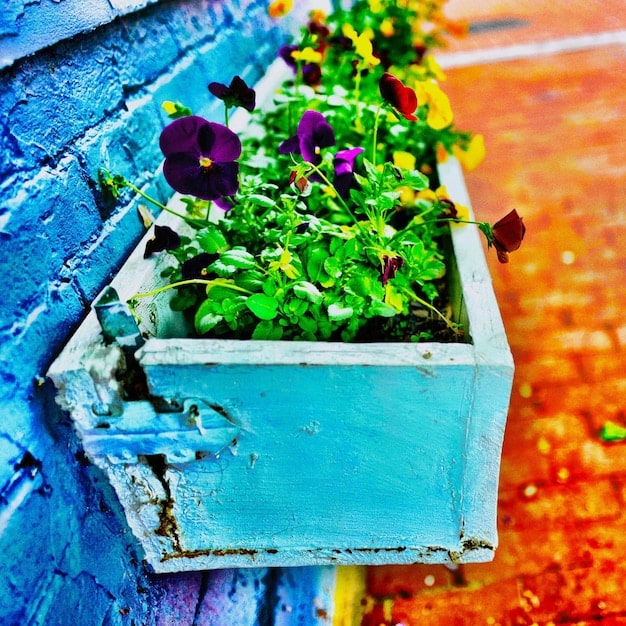
The High Line, New York City
The High Line is a prime example of creative placemaking, transforming an abandoned elevated railway into a stunning urban park. The park features lush gardens, public art installations, and breathtaking views of the city.
The High Line has not only revitalized the surrounding neighborhood but also become a major tourist attraction, contributing to the city’s economy. It serves as a model for innovative urban design and community engagement.
Artspace Projects
Artspace is a national nonprofit organization that develops affordable housing and studio spaces for artists and creative businesses. By transforming vacant buildings into vibrant arts hubs, Artspace helps revitalize communities and support local economies.
These projects create a sense of place, attract visitors, and generate economic activity. They demonstrate how art can be a catalyst for community development.
To conclude, these projects provide affordable work spaces and living spaces for those employed in the arts, while simultaneously improving the area.
Challenges and Considerations
While creative placemaking offers numerous benefits, it also presents certain challenges and considerations that must be addressed to ensure the success and sustainability of projects. These challenges include funding, community engagement, and cultural sensitivity.
By addressing these challenges proactively, communities can maximize the positive impact of creative placemaking and create lasting change.
Funding and Resources
Securing adequate funding and resources is often a major challenge for creative placemaking projects. Many projects rely on a mix of public and private funding, as well as in-kind donations and volunteer support.
Diversifying funding sources and developing sustainable funding models are essential for ensuring the long-term viability of projects.
Ensuring Authenticity
One of the biggest challenges to creative placemaking is ensuring that projects are authentic. You have to make sure to fully incorporate the values and the people who live in the community the project is in.
- Respecting Community Values: Engaging existing communities in a thoughtful and respectful manner.
- Preserving Local Identity: Respecting the history and traditions that already exist in the area.
- Understanding Community Needs: Working with the people who live in an area to ensure they are getting the art that they need to appreciate their community.
Ensuring the authenticity of an art project can go a long way to it being a success.
The Future of Creative Placemaking
As communities continue to seek innovative solutions to address urban and rural challenges, the future of creative placemaking looks bright. With a growing recognition of the value of arts and culture, creative placemaking is poised to play an even greater role in shaping the places we live.
By embracing new technologies, fostering collaboration, and prioritizing community engagement, creative placemaking can create more vibrant, equitable, and sustainable communities.
Embracing Technology
Technology is transforming the way we interact with our environment, and creative placemaking is no exception. From interactive art installations to augmented reality experiences, technology offers new possibilities for engaging communities and enhancing public spaces.
Technology makes sure that all members of the community are considered in the placemaking process, and it offers a means for more complex art to be created and shared.
Promoting Equity and Inclusion
Creative placemaking can be a powerful tool for promoting equity and inclusion, ensuring that all members of the community have access to arts and culture. By prioritizing projects that serve marginalized communities, creative placemaking can help address social and economic disparities.
Placemaking encourages that everyone is heard and accounted for in the process of improving local areas.
| Key Point | Brief Description |
|---|---|
| 🎨 Art Integration | Art transforms underused spaces into vibrant attractions. |
| 🤝 Community Involvement | Successful projects prioritize local engagement. |
| 💰 Economic Growth | Art boosts local economies and property values. |
| 🌐 Future Trends | Technology enhances community engagement & art experiences. |
Frequently Asked Questions
▼
Creative placemaking leverages arts and culture to revitalize public spaces, engage communities, and stimulate economic development. It’s a collaborative approach that shapes the physical and social character of a place.
▼
Art transforms neglected areas into vibrant destinations, attracting residents, tourists, and businesses. Public art installations and performances create excitement and foster a positive perception of the area.
▼
Challenges include securing funding, ensuring genuine community engagement, and maintaining cultural sensitivity. Projects must respect the values and history of the local community to succeed.
▼
Technology enhances community engagement and offers new possibilities for interactive art experiences. It also facilitates more complex and inclusive placemaking processes that consider all members of the community.
▼
Creative placemaking prioritizes projects that serve marginalized communities, addressing social and economic disparities. It ensures that all community members have access to arts and culture opportunities.
Conclusion
Creative placemaking offers a transformative approach to revitalizing underused spaces, fostering community engagement, and driving economic growth. By integrating art and culture into urban and rural planning, we can create more vibrant, equitable, and sustainable communities for all. Embracing innovative strategies and prioritizing community needs will pave the way for a future where art serves as a catalyst for positive change.


